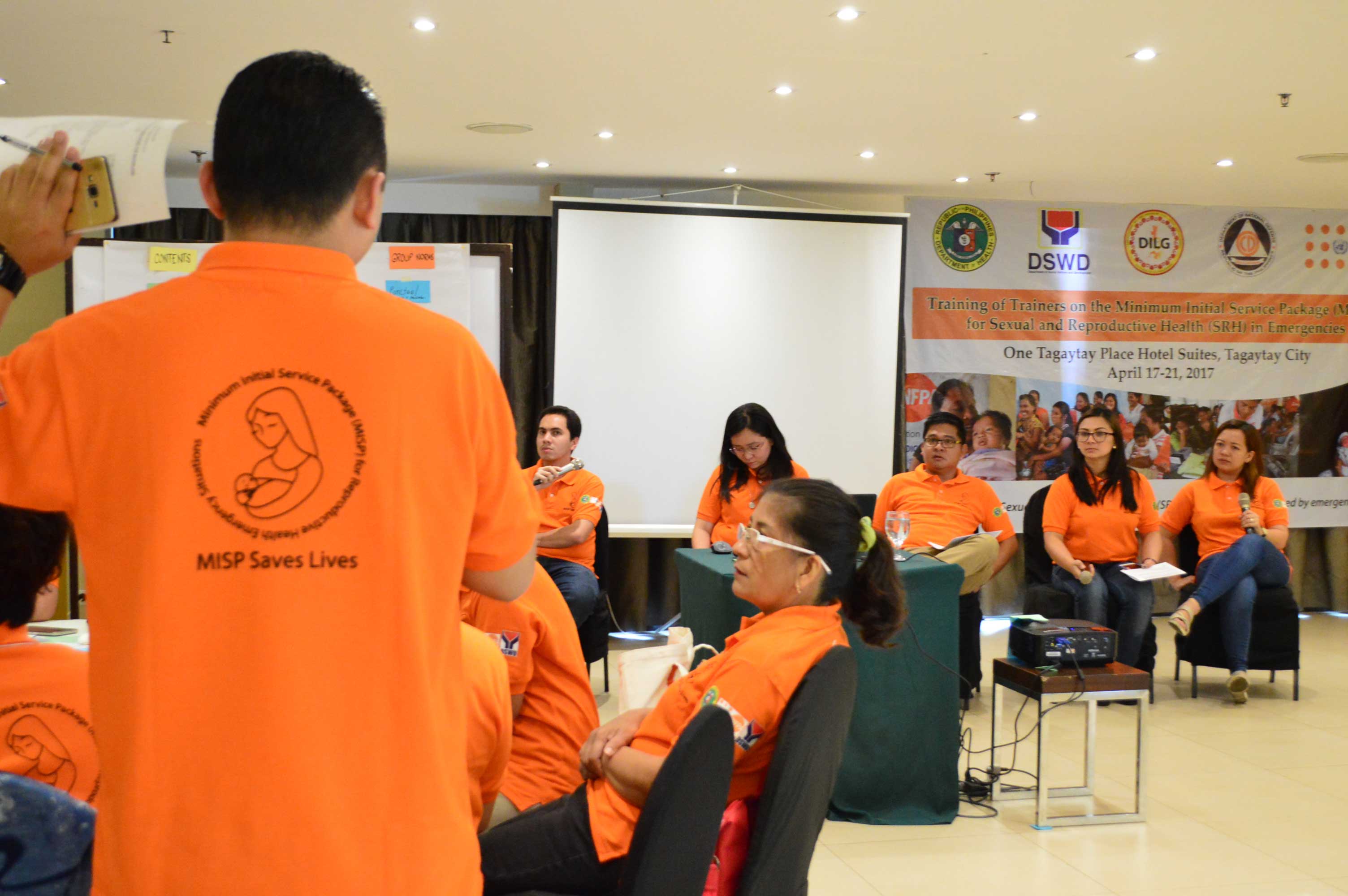Exposure to hazards has turned generation after generation of Filipinos into one of the most resilient people in the world. Bordered by the Pacific Ocean in the east and sitting along the Pacific Rim of Fire, the Philippines - with its population of 102 million - currently ranks third highest in the world in disaster risk according to the 2016 World Risk Report.
In times of emergency and disaster, women - especially pregnant mothers - and girls, become more vulnerable to a range of health and social risks.
Pregnancy complications due to lack of emergency obstetric care may arise, potentially leading to maternal or neonatal deaths. Family planning services may not be fully accessible, increasing the risks associated with unplanned pregnancies. Sexual violence as well as other forms of gender-based violence mostly affecting women and young people also increases during times of instability.
In the Philippines, the 2009 Magna Carta of Women and the Responsible Parenthood and Reproductive Health Law of 2012 provides for the protection of women and girls and ensures their access to sexual and reproductive health services during times of crises through the implementation of the Minimum Initial Service Package for Sexual and Reproductive Health in Emergencies (MISP for SRH).
In February 2016, the Philippine Department of Health took the initiative to launch a department-wide policy that sets the guidelines for all stakeholders in implementing the MISP for SRH, which includes defining the core package of services covered, as well as the implementing mechanism for rolling this out on the ground and down to the communities.
This defining policy went ahead of the World Humanitarian Summit held in May 2016, making the policy environment within the health sector set for the full implementation of the MISP for SRH. The World Humanitarian Summit, however, provided a wider space for member-countries (such as the Philippines), and the UN (through the United Nations Population Fund) to further deepen their shared commitment towards advancing and protecting sexual and reproductive health rights especially in crisis settings.

The Philippine Government further showed its resolve to fully implement the MISP for SRH with the signing of the Joint Memorandum Circular in December 2016, providing an interagency policy for a more cohesive strategy among four key national agencies (the Department of Health, Department of Social Welfare and Development, Department of the Interior and Local Government, and the Office for Civil Defense) in the implementation of the MISP for SRH, from the national level down to the communities.
This allows the four agencies to leverage on their distinct, yet complementing roles in both the preparedness and response phases of an emergency. The policy further requires the integration of the MISP for SRH into the National Disaster Risk Reduction and Management Plan as well as into the Local Disaster Risk Reduction and Management Plans of local government units.
Technical assistance from UNFPA in the form of capacity development activities helped ensure not just the integration of sound implementation practices, but also sealed-in national ownership of the policy-making process and the policy itself.
“The signing of the Joint Memorandum Circular shows that our partners from the Philippine Government are going full speed ahead towards realizing its commitment at the World Humanitarian Summit,” said Klaus Beck, UNFPA Country Representative in the Philippines.
“What proved key to the speedy drafting of the policy was the ownership of the process by the government agencies involved. This is essential in making sure that the policy is internalized cohesively across agencies, as this is rolled out from the national level down to the local government units,” Beck adds.
With support from the Australian Department of Foreign Affairs and Trade (DFAT), UNFPA has just completed the capacity development of regional staff from the four government agencies on the MISP for SRH. The MISP Training of Trainers were held in the island regions, with the Mindanao leg completed in March, while the training in the Luzon and the Visayas were concluded in April and May, respectively.
"The next phase is localization. While capacity building of our partners is always the first step, we cannot rest until we have trained the LGU staff - the frontliners at the local level, and have institutionalized these trainings so that the Philippines will have the continuing capacity to respond to the reproductive health needs of communities affected by disasters, as well as prevent and address gender-based violence during emergencies," Beck says.
- Cynthia Arce


